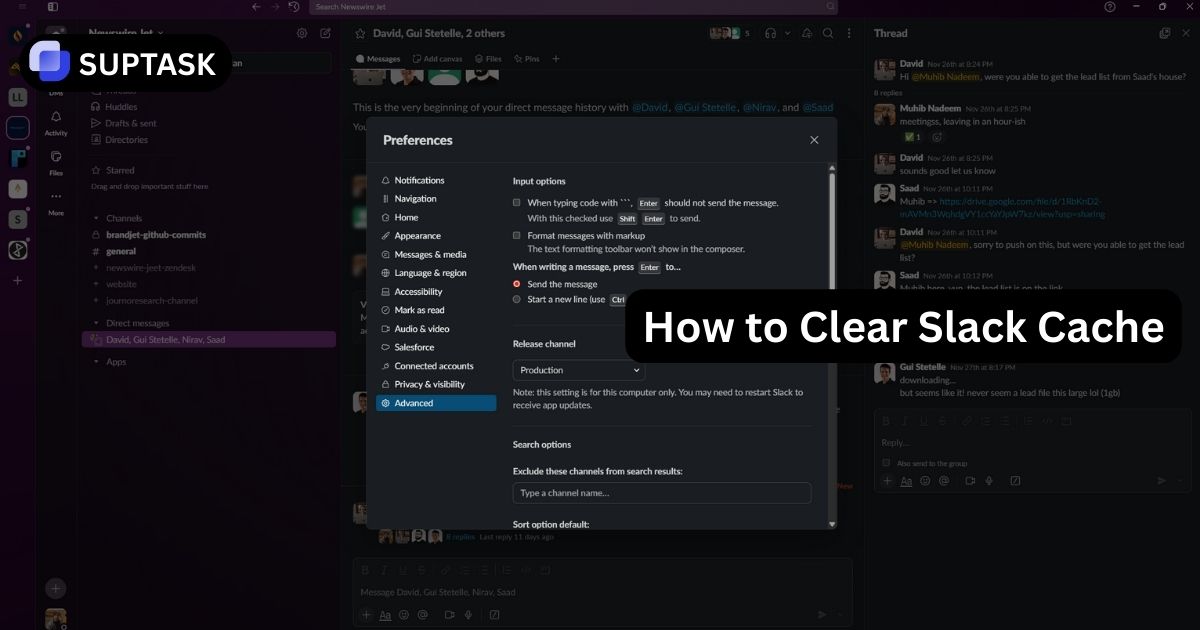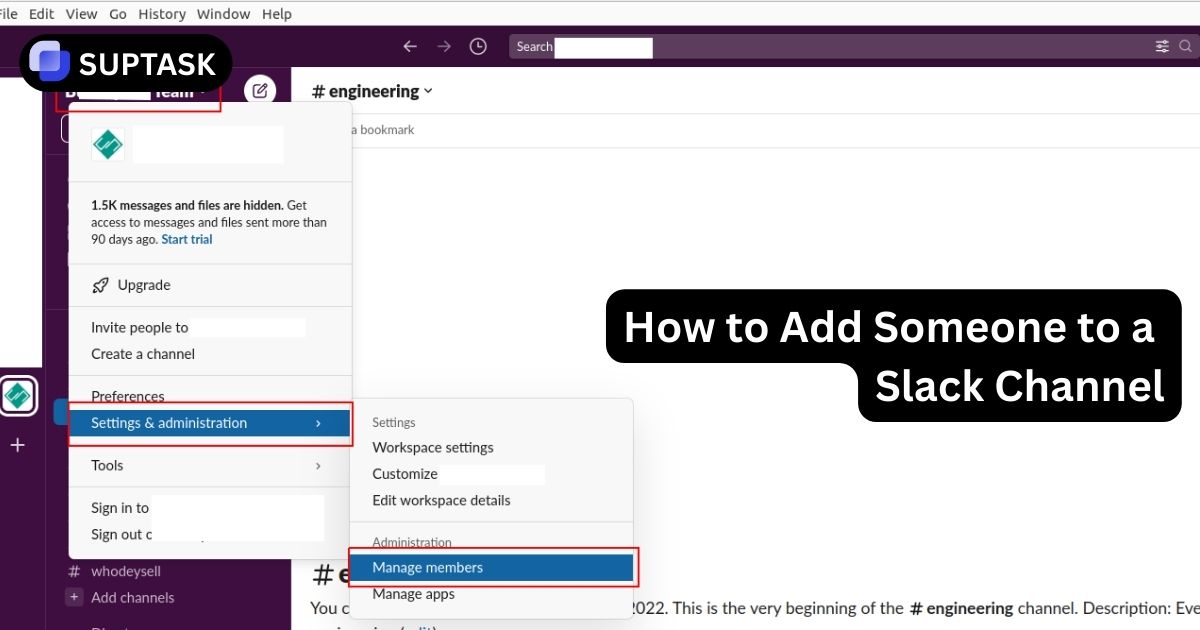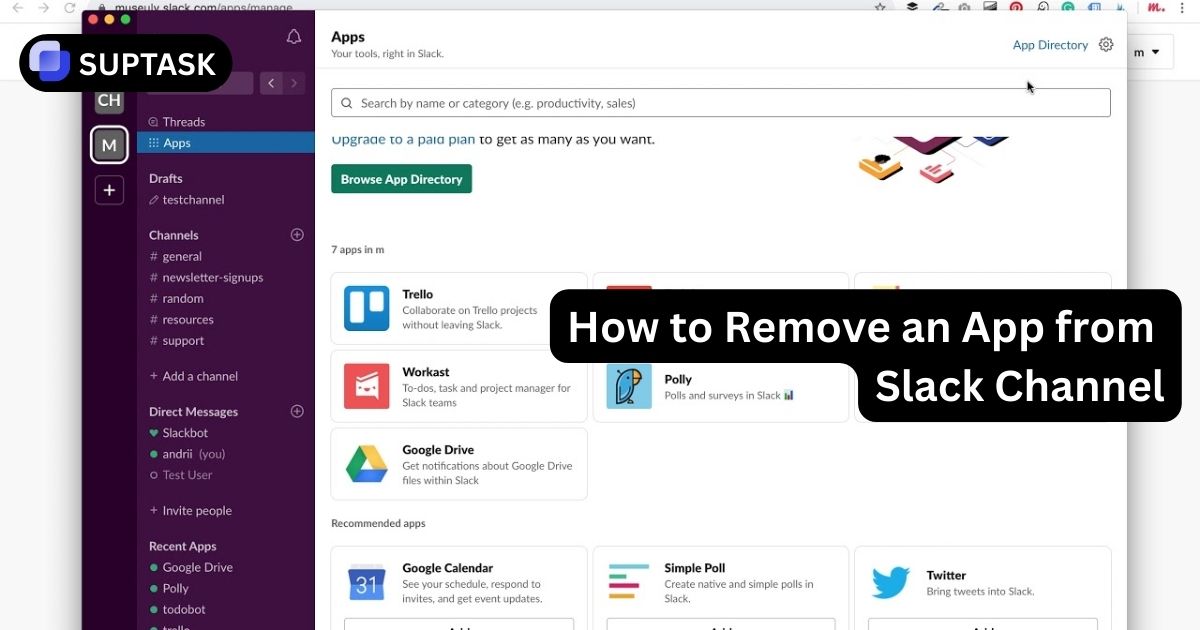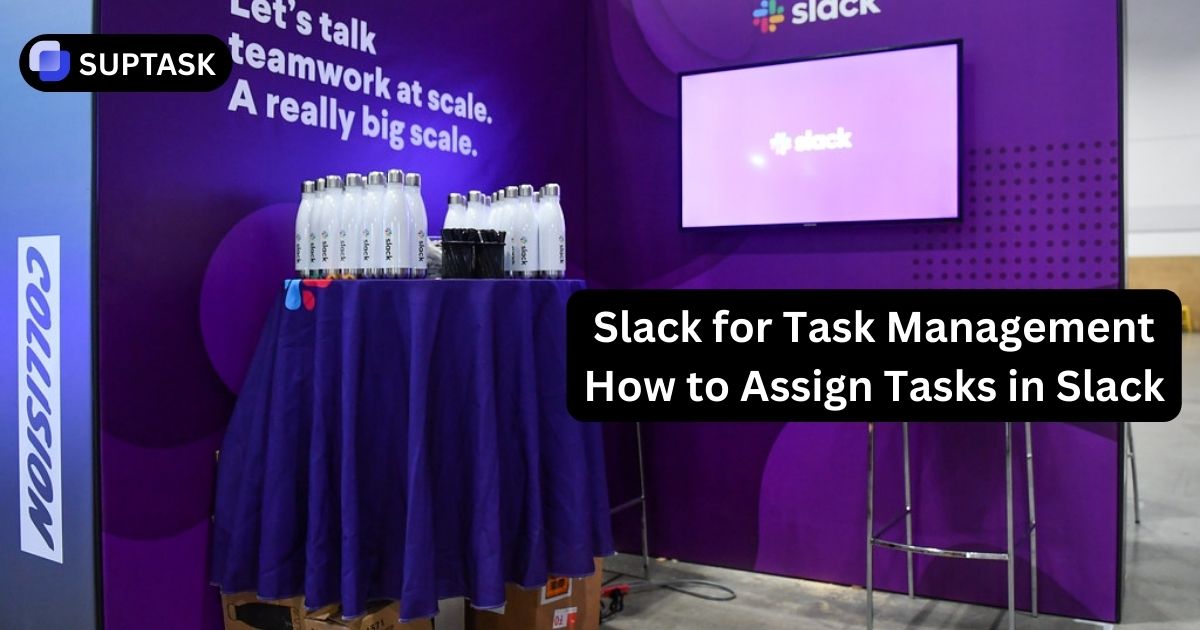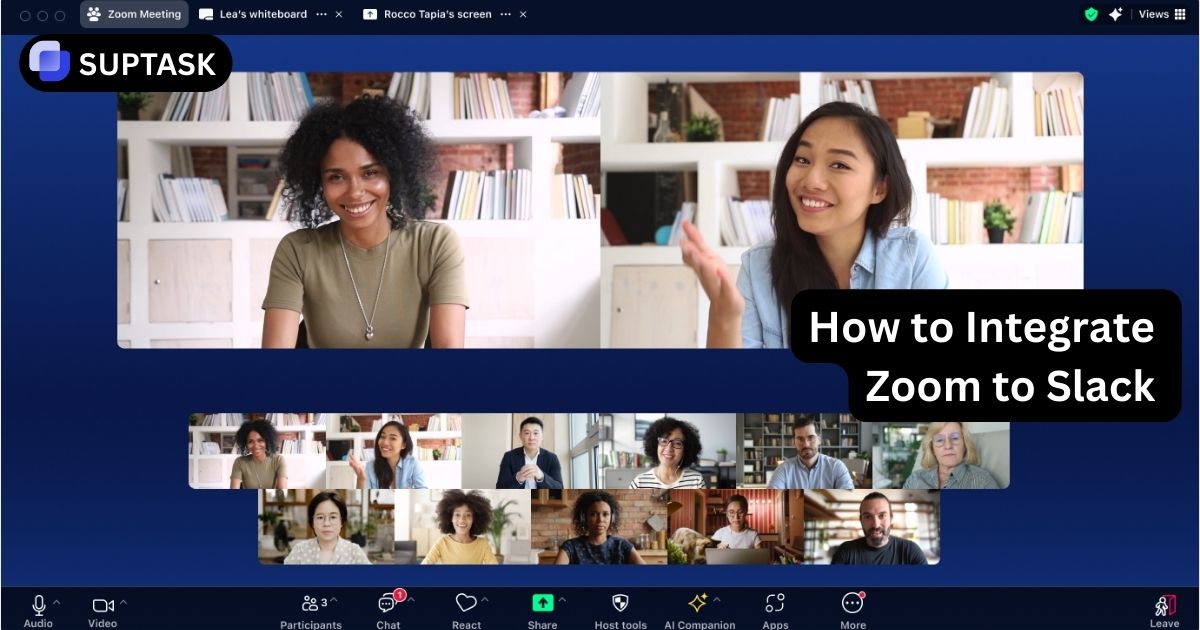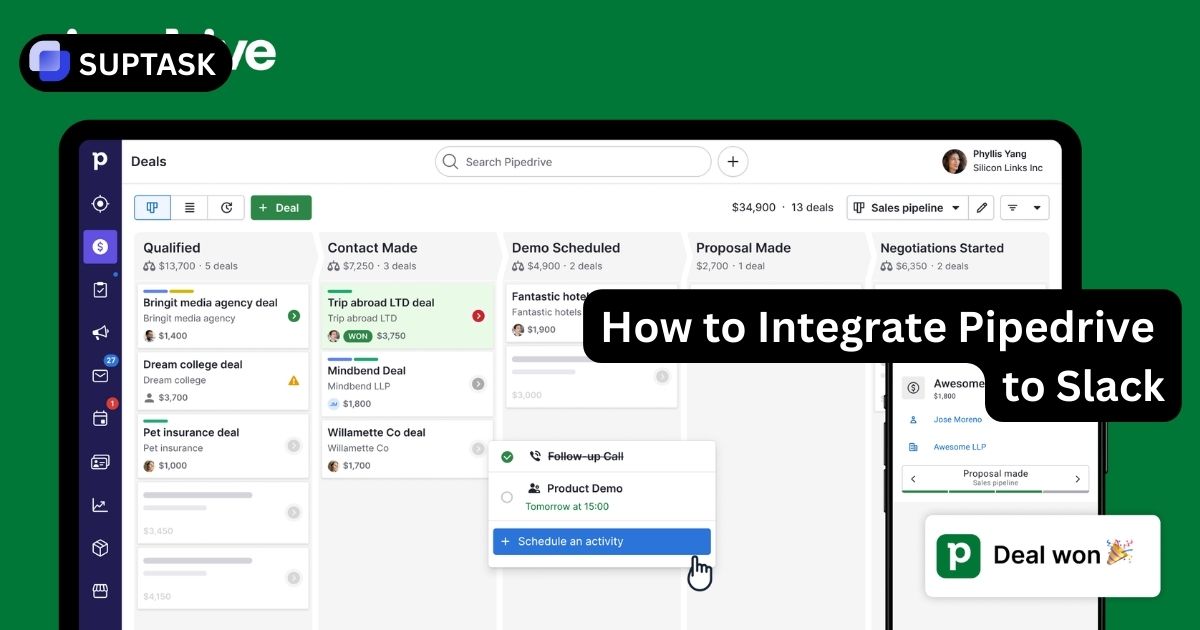Picture your Slack on a busy morning. A teammate asks for a draft, someone else needs a thread summary, a customer update arrives, and the channel keeps moving. Bring ChatGPT into the conversation so you can ask, generate, summarize, and automate without leaving Slack. This page shows how to set it up in minutes and choose the approach that fits your team.
Why Add ChatGPT To Your Slack Workspace
Stop switching between ChatGPT and Slack. Bring AI-powered assistance directly into your team conversations for instant answers, content generation, and workflow automation.
Instant AI Responses
Ask questions and get answers without leaving Slack. No more tab switching or copy-pasting between apps.
Workflow Automation
Automate repetitive tasks like summarizing threads, drafting emails, and generating reports with simple commands.
Team Knowledge Hub
Create a shared AI assistant that everyone can access. Build institutional knowledge and improve onboarding.
Three Ways To Integrate ChatGPT With Slack
Choose your integration path based on technical expertise, budget, and required features. Each method has distinct advantages.
Official Slack Apps
Pre-built apps from the Slack App Directory. Install in 2 clicks, no technical setup required. Best for non-technical teams.
- 2-minute installation
- No coding required
- Built-in security
- Regular updates
OpenAI API Direct
Build custom integration using OpenAI and Slack APIs. Full control over features, prompts, and behavior. Requires development skills.
- Complete customization
- Advanced prompt engineering
- Context management
- Cost optimization
No-Code Platforms
Use Zapier, Make, or similar tools to connect ChatGPT and Slack. Visual workflow builder, no coding needed.
- Visual workflow builder
- Multi-app automation
- Pre-built templates
- Easy modifications
What Are Your Options for Integration?
You basically have two realistic approaches:
- Install the official ChatGPT App for Slack
ChatGPT for Slack is built by OpenAI in partnership with Slack and offers native integration. - Build a custom integration (bot + API) or use a no-code tool
If you need more control (private model, internal data, custom workflows), you can build your own using the OpenAI API + Slack bot/token + custom code.
Or use a no-code automation platform like Zapier to link Slack and ChatGPT with triggers/actions.
Which path you choose depends on your needs (speed vs customisation vs cost). I’ll walk you through both in the next sections.
Step-by-Step Setup Guide
Follow this interactive wizard to integrate ChatGPT with Slack using the official app method (recommended for beginners).
Step 1: Get Your OpenAI API Key
You'll need an OpenAI API key to connect ChatGPT to Slack. This authenticates your requests and enables billing.
- Visit platform.openai.com
- Sign up or log in to your OpenAI account
- Navigate to API Keys in the dashboard
- Click Create new secret key
- Copy the key immediately (you can't view it again)
- Store it securely (use a password manager)
Step 2: Choose a Slack App
Several high-quality apps connect ChatGPT to Slack. Pick one based on your needs and budget.
ChatGPT for Slack (by OpenAI)
$10/monthOfficial integration with GPT-4 access, thread summarization, and workspace search. Most reliable option.
GPTBot
Free TierPopular third-party app with generous free tier. Custom prompts, slash commands, and channel-specific configurations.
Step 3: Install and Configure the App
Standard installation process for Slack apps. Takes about 2 minutes.
Installation Steps:
- Go to the Slack App Directory
- Search for your chosen ChatGPT app
- Click Add to Slack
- Select your workspace from the dropdown
- Review the permissions (ability to read messages, post replies)
- Click Allow to authorize
- You'll be redirected to the app's configuration page
- Paste your OpenAI API key in the provided field
- Configure settings (model version, temperature, max tokens)
- Save configuration
Step 4: Test Your Integration
Verify everything works by running a few test commands.
Test Commands to Try:
/chatgpt What is the capital of France?
@chatgpt Summarize the last 10 messages in this channel
/chatgpt Write a professional email declining a meeting invitation
Powerful Use Cases for ChatGPT in Slack
Real-world examples of how teams leverage AI in their workflows.
Instant Customer Support Responses
Scenario: Your #customer-support channel receives hundreds of questions daily. Many are repetitive.
Solution: Train ChatGPT on your knowledge base and let it handle tier-1 questions automatically.
Example Workflow:
- Customer posts question in support channel
- ChatGPT bot monitors channel and responds instantly
- Complex questions get escalated to human agents
- Bot learns from human responses to improve
Results: 60% reduction in response time, 40% fewer questions escalated to human agents, 24/7 availability.
Automated Content Generation
Scenario: Marketing team needs to create social posts, email drafts, and blog outlines quickly.
Solution: Use ChatGPT commands to generate first drafts directly in your #marketing channel.
Example Commands:
- /chatgpt Write 5 tweet variations about our new product launch
- /chatgpt Create a blog outline about AI trends in 2025
- /chatgpt Draft a cold outreach email for enterprise clients
Results: 50% faster content creation, consistent brand voice, more time for strategy vs execution.
On-Demand Code Review and Debugging
Scenario: Developers need quick code explanations, reviews, and debugging help without leaving Slack.
Solution: Share code snippets in your #engineering channel and ask ChatGPT for analysis.
Example Use Cases:
- Explain complex code from a third-party library
- Suggest optimizations for performance-critical functions
- Generate unit tests for new features
- Debug error messages and stack traces
Results: Faster onboarding for new developers, reduced context switching, instant second opinion on code quality.
Automatic Meeting and Thread Summaries
Scenario: Long Slack threads and meeting notes need to be summarized for executives or team members who were offline.
Solution: Use ChatGPT to generate TL;DR summaries of any conversation.
Example Workflow:
- After a long discussion, type: @chatgpt Summarize this thread with key decisions and action items
- ChatGPT analyzes the entire conversation
- Provides bullet-point summary with action items and owners
- Post summary at top of thread or in dedicated #updates channel
Results: Executives stay informed without reading 100+ messages, clear documentation of decisions, improved accountability.
Integration Method Comparison
Detailed comparison to help you choose the right approach.
| Feature | Official Apps | Direct API | No-Code Platform |
|---|---|---|---|
| Setup Time | 2-5 minutes | 2-4 hours | 15-30 minutes |
| Technical Skills | None required | Python/Node.js | Basic workflows |
| Monthly Cost | $5-20 + OpenAI | OpenAI only (~$10-50) | $20-50 + OpenAI |
| Customization | Limited | Unlimited | High |
| Maintenance | ✓ Auto-updates | ✗ Manual | ✓ Managed |
| Multi-App Integration | ✗ | ✓ Custom | ✓ Visual |
| Support | App developer | Self-support | Platform support |
| Best For | Small teams, quick setup | Tech teams, specific needs | Business users, automation |
Cost Calculator
Estimate your monthly costs for integrating ChatGPT with Slack.
Monthly Cost Estimator
Need Task Management in Slack Too?
While ChatGPT handles questions and content, Suptask manages your tickets and tasks. Create, assign, and track work directly in Slack channels with our native ticketing bot.
Trusted by 1,000+ teams • No credit card required • Integrates with ChatGPT workflows
Frequently Asked Questions
Everything you need to know about integrating ChatGPT with Slack.
Ready To Add AI To Your Slack Workspace?
Start with the official app for the easiest setup, or explore custom integrations for advanced use cases. Transform how your team collaborates with AI-powered assistance.
Your Next Steps
Here’s how to move from idea to live:
- Choose your path: official app vs custom integration vs no-code.
- Identify one or two pilot use cases (e.g., summarising #project-x, drafting proposal text).
- If choosing official app: install in test workspace, invite 2-3 users, gather feedback.
- If choosing custom: register app, get API keys, build a proof-of-concept bot that handles one task.
- Set up training / documentation for your team so they know how to ask the bot and when.
- Monitor key metrics: how many queries, what time saved, what value delivered.
- Iterate: refine prompts, restrict channels, improve performance based on feedback.
- Expand: once pilot is solid, rollout to more channels, more use-cases.



